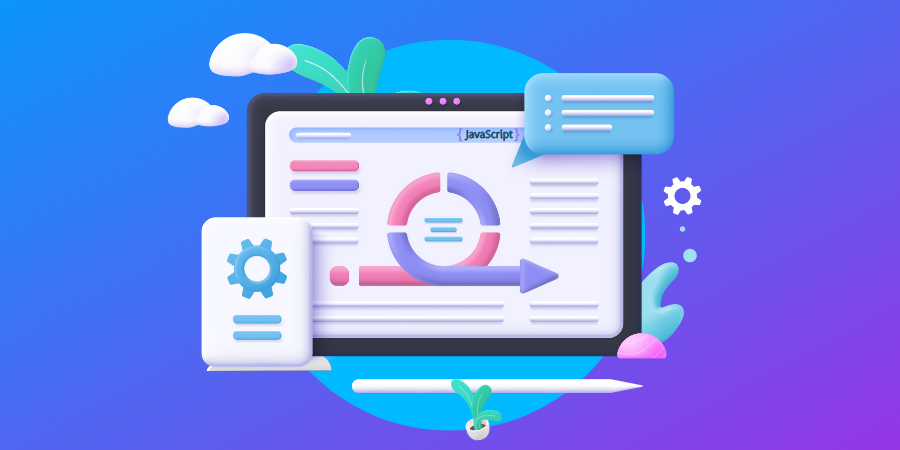W
hen we think of web development, we often picture website design and coding. But web development goes much beyond these foundational concepts. It has a substantial impact on how we view a brand. With more than 6 billion people connected to the internet, web development has built its significance in this rapidly expanding industry. And the focus has now turned towards delivering a knockout brand experience, this brings out the need to utilize the different tools and technologies. The constant advancements in technologies, frameworks, tools, and methodologies have made web development more efficient and less time-consuming for developers to make a user-friendly and aesthetic website.
Let’s discover cutting-edge trends, essential tools, and proven techniques to build exceptional online experiences. Discover the secrets to staying ahead of the curve in 2024
Programming Languages for Web Development
Web development has become more convenient and capable as technology has advanced. In 2024, we have seen the rise of fully functional, intelligent, integrated, and engaging web applications as compared to nothing but plain and inflexible websites with manual coding and plenty of time-consuming tasks back in the early 2000s. Modern web development had its start with the introduction of languages like HTML, CSS, webassembly, and JavaScript, which made it possible to create both responsive and aesthetically pleasing websites.
Programming languages. Frameworks, libraries, and different methodologies have been developing swiftly over time. Complex online applications were developed as a result of the introduction of languages like Python, Ruby, and PHP, which made server-side logic and database interfaces easier. The emergence of JavaScript frameworks like Vue.js, Angular, and Reactjs made the process of creating dynamic and interactive user interfaces more scalable and effective.
Today, the focus is on delivering consistent user experiences across devices, driven by advancements in technology and a deep understanding of user needs.
The Power and Benefits of Progressive Web Applications
Since Progressive Web Apps (PWAs) have ushered in a new era of web experiences, developers and businesses now have a versatile platform to create engaging user interactions. These cutting-edge applications combine the accessibility of websites with the functionality of native apps, delivering an exceptional user experience across different devices. Built on contemporary web technologies like HTML, CSS, web assembly, and JavaScript, these apps provide users with several advantages typically found in apps. What makes PWAs a linchpin is their eco-friendliness as they are easily adaptable on any screen. They can be put on a device’s home screen, function offline, and send push notifications.
Benefits
- PWAs mimic mobile app design and performance, ensuring better speed, responsiveness
- and functionality.
- Easy installation from web browsers and access via URLs make user abandonment significantly
- lower.
- Efficient operation, caching, and content serving improve retention rates and customer loyalty.
- • Push notifications increase brand recognition and reach the target audience.
- Freedom from distribution platform requirements and associated risks.
- Simplified process for unified development, updates, and product information.
- No need to meet stringent app store requirements, ensuring consistent app availability.
- Enhanced SEO benefits and alignment with a mobile-first approach boost discoverability.
- Efficient marketing strategies and enhanced user experiences reduce costs, promoting
- business growth.
Influence Of Artificial Intelligence And Machine Learning
In the pre-AI (Artificial intelligence) and ML (machine learning) era, web development was a slow and arduous process, demanding considerable manual effort, as developers spent hours writing code. But AI and ML have taken the load of time-consuming tasks off developers’ shoulders. It has merely changed the way developers build algorithms and perform coding tasks with their ability to analyze data sets, making accurate predictions that result in creating personalized user experiences.
Web development already benefits greatly from generative AI, such as ChatGPT, which automates content creation, makes code recommendations, and expedites the debugging process.
Furthermore, machine learning has been the cornerstone in automating and improving sophisticated processes like natural language processing, image and audio recognition, and predictive analytics, allowing programmers to create enhanced and responsive web applications. These developments result in less manual coding, more effective development procedures, and ultimately, more complex and user-friendly web experiences.
Most Effective Web Development Tools
With programming language and systems and algorithms constantly updating according to user interactions and experience. Coding and other time-consuming tasks like debugging errors and managing servers have become headaches for developers. With the helping hand of web development tools, which simplify the development of high-quality products and streamline the entire process,
However, selecting the optimal tool that maximizes output can be a daunting task, given the numerous options available.”
So, which web development tools are the best available? We have compiled a list of the best tools for web developers that have been tried and tested for both front-end and back-end to launch their websites.
ReactJS (front end): Developed by Facebook, Reacts is a Javascript library that offers complex frameworks for building dynamic user interfaces that render smoothly and operate at a high speed. It is an SEO-friendly framework that includes a full suite of developer tools.
Vue.js (front end): Unlike its more complex counterparts, Vue offers a gentle learning curve while delivering robust performance. It excels at handling dynamic interfaces and complex applications, making it a popular choice for developers. Vue.js component-based architecture promotes reusability and maintainability, while its reactive system ensures efficient updates to the DOM. With a focus on performance and developer experience, Vue.js has become a preferred choice for many web development projects like Alibaba, Xiaomi, and many others.
Angular (front-end): Angular, a Typescript-based framework, maintained by Google, is a cornerstone of modern web development. It is perfect for complex applications because of its secure architecture and two-way data binding. Its component-based architecture enhances code quality. It also contains built-in technology that allows it to rapidly update changes made to the model to the view.
Django (back end): The versatile, open-source Django Python framework makes it possible to construct websites rapidly. Code reuse and rapid development are prioritized, making it an excellent framework that offers quick setup and helps create clear, prudent designs and easy to use. It provides a stable environment to construct complex, database-driven websites. Security and scalability are given top priority, and an integrated management interface is among its primary features.
Express.js (back end): Express.js is a feature-rich Node.js framework that is simple to use and adaptable, ideal for developing online apps and APIs. Due to its effectiveness and simplicity, developers frequently choose it. It renders an extensive feature set for managing middleware, routing, and HTTP requests.
Laravel (back end): Laravel, a popular open-source PHP framework, offers a streamlined development experience. Built on the MVC architectural pattern, it provides developers with a set of tools for creating complex web applications. With features like expressive syntax, elegant ORM (Eloquent), and robust authentication, Laravel grants developers to build secure, scalable, and maintainable applications efficiently.
Responsive and Mobile-First Design: Nearly 60% of web traffic originates from mobile devices, and practically all populations have now centered around their mobile screens. Making it obvious for businesses to shift towards a responsive and mobile-first approach to get more engagement. Developers use this approach to create websites keeping the smallest screen size in mind and gradually scaling up to larger displays. By starting with a mobile-friendly foundation, developers can create websites that are not only responsive but also deliver exceptional user experiences on every platform.
But why is it important?
- Responsive design preserves both the functionality and aesthetic appeal of websites across all
- devices.
- User experience is paramount for every business. Websites and apps that effortlessly adapt to
- different screen sizes, from smartphones to smart TVs, are essential for engaging users and
- driving satisfaction.
- By prioritizing user needs and preferences, responsive design improves search engine rankings
- and overall website performance too.
Serverless Solutions
Developers can finally bid farewell to server-related headaches, as serverless architecture now handles back-end processes. With the load of server management lifted by these solutions, they can concentrate entirely on writing code. Cloud providers take care of the underlying infrastructure, automatically scaling resources based on demand. This approach eliminates the need for installing, configuring, and managing servers, which not only enhances developer productivity but also results in significant cost savings.
Virtual reality and augmented reality
These days, augmented reality (AR) and virtual reality (VR) are formidable instruments for transforming the online experience. These quickly developing technologies provide new avenues for engagement and interaction. AR transmits digital data into the physical world, whereas VR submerges users in fully digital worlds. Thanks to their ability to provide more realistic, personalized, and interactive experiences, both technologies have the potential to completely transform many industries, including real estate, gaming, e-commerce, and education.
Today, web development has become a powerful field shaped by innovative technologies like Progressive Web Apps, AI, serverless architectures, and different tools and frameworks. Learning new methodologies and technologies not only enhances user experience but also drives business growth and brand perception. Moving forward, the emphasis will be on utilizing these advancements to deliver unparalleled web experiences that meet the ever-growing demands of a connected world. Let’s build your website from scratch
Related Posts

- Admin
- February 28, 2022
Creative Design Work to Make Your WordPress Innovative.
Council are celebrating the incredible achievement of the Companies and Stakeholders. Due to BI ..

- Admin
- February 28, 2022
Ultimate New Guide to Make Your Portfolio an Awesome.
Council are celebrating the incredible achievement of the Companies and Stakeholders. Due to BI ..



